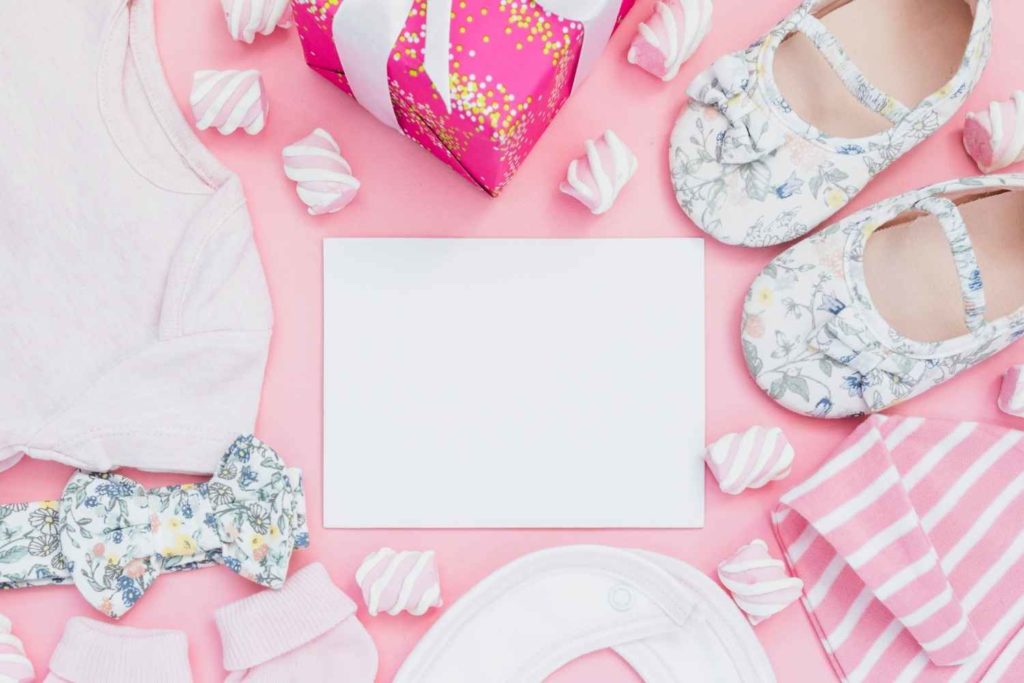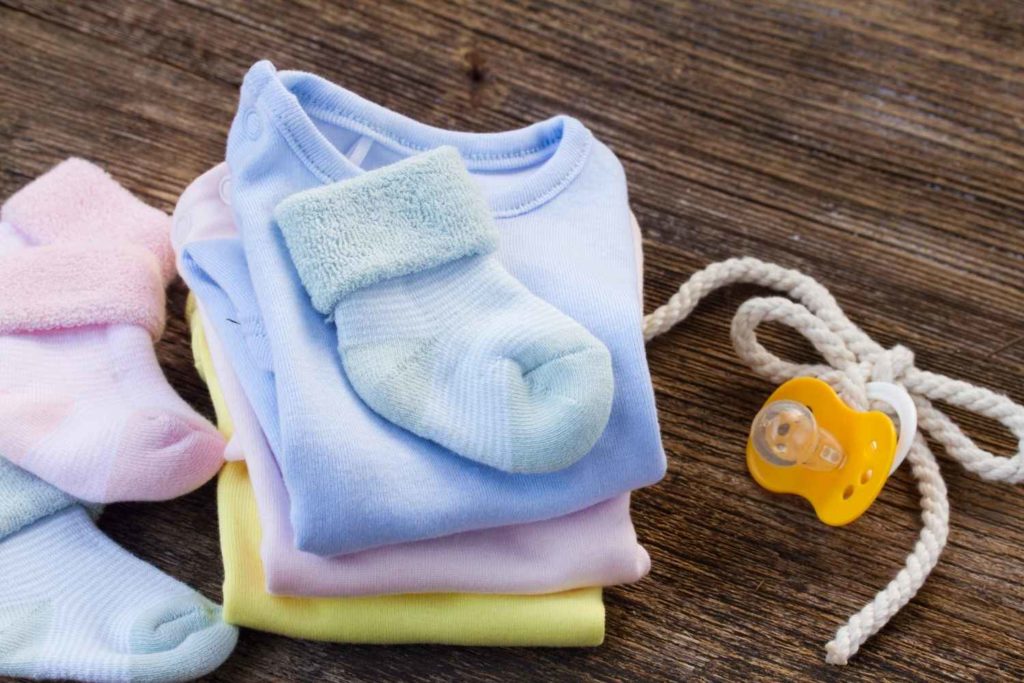Trying to figure out how much baby clothes do you need for your little one can be a daunting task. This comprehensive article will help you build the perfect newborn wardrobe for your son or daughter!
When you prepare for the arrival of your new baby, one thing that you may be wondering is what you need to buy or how much baby clothes do I need to buy. Although it’s unlikely you’ll have time to organize your baby’s closet, it’s a good idea to get a head start on what you may need now so that you don’t have to run out and buy more later.
Factors on which newborn’s clothing depends:
Newborns go through a lot of clothing—after all, they spit up and have diaper blowouts all the time. Plus, babies grow fast during their first few months and can quickly outgrow even those tiniest outfits. So how many newborn clothes do we need?
A straightforward answer depends on how often you’re willing to do laundry. If you plan on washing clothing every day, you can get away with just seven outfits (plus accessories). If you want to wash clothes every other day, plan on having about 14 complete outfits (plus accessories). It’s fun to buy clothes for your baby, but unless you have a lot of storage space, it’s best not to buy too much.

You’ll be surprised at how quickly your baby outgrows newborn clothing. Newborn babies can wear anything from preemie sizes up to 3 months, depending on their size. Don’t get stuck with the closet full of clothes your child will never wear. Which clothes your baby will wear depends on which season they are born. If your little one is due in summer, they will need very different outfits than a baby born in winter.
While the answer will also vary by family, some general guidelines can help you figure out how much you should buy. The number of newborn clothes you’ll need will depend partly on how often the baby will wear each day. Most babies wear only for about three hours at a time, so if you’re having a baby every two weeks or so, then twice that amount is probably plenty. If you’re planning to leave the house with your baby every day and won’t be able to wash the clothes in between wearing them, then you might want to stock up on a few more outfits.
Another factor affecting how much clothing your baby needs is where they will spend most of their time. If your newborn spends most of their time in a diaper bag, then chances are they’ll just be wearing diapers and not a lot else.
A baby goes through an average of 10-12 newborn diapers per day, which comes out to 70-84 diapers per week if you do the math. It would be best if you planned on washing diapers every other day, so you’ll need at least two dozen diapers in a size newborn.
It’s tempting to go overboard and buy many clothes for your new baby. But newborns grow quickly and can easily get overwhelmed. It’s better to have a few outfits that are easy to dress your infant in, rather than having many outfits that are difficult and frustrating to use.
For starters, you’ll need at least four or five onesies and undershirts. These are usually made of soft cotton and worn under other clothing or on warm days. Make sure that the neckline is wide enough to fit over your baby’s head, but not so wide that it slips off his shoulders. You may also want to buy a few outfits with built-in mittens or socks, so you don’t have to worry about losing them.
Look for pants with elastic waists because they’re easier to put on an infant than pants with buttons or zippers. A pair of sweatpants or leggings is a good idea if you live in a cold climate. Pair them with a long-sleeved sweater or sweatshirt for warmth, but be careful not to overdress your newborn. Two extra layers should be enough for most weather conditions.
Newborn clothes for winter:

Many moms make the mistake of assuming they’ll need a ton of newborn clothes for those first few months at home with the baby. And in some cases, that’s true — especially if you’re expecting to have a baby who’s born at the smaller end of the size chart or if your little one is born in the winter (you’ll want more layers).
But here’s the thing: Most babies don’t wear newborn size for long. Some skip it altogether! The average newborn weighs about 7 pounds at birth and gains an average of 1/2 pound to a pound each week for the first few months. Even if your baby does come out on the small side and doesn’t reach 8 pounds until ten weeks, he’ll most likely still fit into 0-3 month clothes by then.
You should dress your baby appropriately but do not overdress your newborn. Your newborn’s room should be at a temperature of 21C/70F, and if your child is happy and warm in the room, they will not need layers of clothing to keep them warm.
For sleep time, you will need;
- 1-2 sleepsuits (one-piece pyjamas)
- 1-2 bodysuits
- 1-2 cardigans or jumpers
- 2-3 blankets or wraps
- Two pairs of socks or booties
During the day, you will need:
- 2-4 bodysuits (vest)
- 1-2 cardigans or jumpers
- 2-3 trousers or skirts and tops (if separate trousers)
Newborn clothes for summer:

Newborn clothes are so adorable it’s tempting to stock up on all of them. However, you don’t need a lot of newborn clothing because they’re only going to fit for a couple of months.
What You Need
- 3 Onesies
- 3 Sleepers
- 2 Pairs of Socks or Booties
- 1 Light Jacket or Sweater
If your baby is born in summer, you’ll want at least three short-sleeved bodysuits and something to cover them in when they go outside. Three long-sleeved bodysuits are enough for winter, as long as your house is warm. Babies can wear just a diaper and a T-shirt for hot summer weather. There’s debate over whether babies need socks, but they do keep tiny feet cozy in cooler temperatures. In warmer weather, socks aren’t necessary unless your baby likes them.
In the summer heat, babies don’t need much more than that — except perhaps a hat to protect them from the sun. When the temperature rises beyond eighty degrees Fahrenheit, it’s time for air conditioning or other measures to keep your baby cool, such as turning on a fan or taking a swim (if supervised).
A newborn should wear one more layer than an adult in the same conditions because infants lose heat more quickly than adults do.
Must-have newborn clothes:
A great way to ensure that baby is comfy is to make sure that she has suitable clothing. This doesn’t mean you have to put her in an entire outfit each time she wakes up for a feeding, but it does mean that you should think about what you’re putting her in.
Some parents like to have their newborns in onesies, for example, little t-shirts with snaps at the bottom or on the shoulders), while others like having a baby in a diaper and no shirt at all. If it’s summertime and your house tends to be warm, the diaper-only option may be right for you. However, if it’s winter or other people living in your home who run cold, a onesie might be a better choice.
Suppose you use covers over your baby’s diapers (pre-folded cloth diapers or fitted cloth diapers). In this scenario, it makes sense to use a onesie under the cover so that baby doesn’t get too cold from having his clothing pulled up around his waist. And even if you’re not using covers over your baby’s diapers, onesies can come in handy for keeping the baby warm when he’s awake and crawling around on the floor.
Conclusion:
A couple of stretch wraps are also beneficial in summer because they let air circulate the baby’s skin. Onesies are great for day and nightwear. They work well as the base layer for baby outfits in the spring and summer —add pants and a lightweight sweater when it gets chilly.
Look for onesies made from a lightweight cotton blend (not 100 percent cotton) that will keep your baby cool during the warmer months. In the fall and winter, choose onesies made from 100 percent cotton or flannel. Doing laundry every day, you can get away with about three onesies for spring and summer. But if you’ll be doing laundry less frequently, consider getting six.









